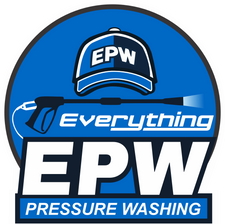 news
news
The Evolution of Pressure Wash Systems: From Basic to Advanced Technology
Contents
Exploring the fascinating journey of pressure wash systems unveils a tale of innovation, efficiency, and technological advancement. From humble beginnings to cutting-edge solutions, the evolution of wash systems has revolutionized the cleaning industry. Join us as we delve into the history, components, and automation of these powerful machines.
Understanding the Fundamentals of Pressure Wash Systems
Pressure wash systems, at their core, utilize high-pressure water spray to remove dirt, grime, and impurities from surfaces. The concept of pressurized cleaning dates back to the early 1920s when steam was used for industrial cleaning applications. Over time, as technology progressed, the modern pressure washers we know today emerged to deliver more efficient and powerful cleaning results.
The key components of a pressure wash system include a motor or engine, a pump that pressurizes the water, hoses to deliver the pressurized water, and various nozzles or tips to control the spray pattern. Understanding these fundamental elements is crucial to grasp how these systems function effectively in different cleaning scenarios.
Pressure wash systems come in various types, ranging from electric-powered washers suitable for home use to gas-powered industrial-grade machines used in heavy-duty cleaning applications. The versatility and power of these systems make them indispensable tools in sectors such as automotive, agriculture, construction, and maintenance.
Moreover, the water pressure generated by these systems plays a vital role in their cleaning capabilities. The pressure is measured in pounds per square inch (PSI) and determines the force with which water is expelled from the washer. Understanding the relationship between pressure, water flow rate, and cleaning efficiency is essential for optimizing the performance of a pressure wash system.
In essence, the evolution of pressure wash systems has been fueled by the continuous refinement of key components, improved efficiency in water usage, and the development of user-friendly features that enhance usability and performance. These advancements have elevated pressure washers from basic cleaning tools to sophisticated cleaning solutions suitable for a wide range of applications.
Innovations in Pressure Wash System Components
The evolution of pressure wash systems has been marked by notable innovations in key components that have enhanced their functionality and performance. One significant advancement lies in the development of more durable materials for pumps and hoses, increasing the longevity and reliability of these critical parts.
Furthermore, advancements in nozzle technology have revolutionized the versatility of pressure washers, allowing users to adjust the spray pattern, angle, and intensity to suit specific cleaning tasks. From pinpoint precision to wide coverage, the range of nozzles available provides users with greater control and customization options.
The integration of advanced features such as adjustable pressure settings, detergent injection systems, and automatic shut-off mechanisms has streamlined the operation of pressure wash systems, making them more user-friendly and efficient. These innovations cater to varying user needs and enhance the overall cleaning experience.
Moreover, the advent of compact and portable pressure washers has expanded the accessibility of these powerful cleaning tools to a broader audience. Whether for home use, professional cleaning services, or industrial applications, the availability of compact models has democratized the benefits of pressure washing technology.
The Role of Automation in Modern Pressure Wash Systems
Automation has emerged as a game-changer in modern pressure wash systems, introducing efficiency, precision, and convenience to cleaning processes. The integration of automated features such as programmable settings, digital displays, and remote control functionalities has revolutionized the operation and monitoring of pressure washers.
One key advantage of automation in pressure wash systems is the ability to optimize cleaning parameters based on specific requirements. Users can set predefined cleaning protocols, adjust pressure levels, customize spray patterns, and monitor performance metrics in real-time, enhancing overall efficiency and effectiveness.
Additionally, automation technology enables predictive maintenance and fault detection in pressure wash systems, minimizing downtime and reducing the risk of operational failures. By leveraging data analytics and smart sensors, modern washers can self-monitor performance, identify potential issues, and prompt preventive maintenance actions.
The convenience of automated features in pressure wash systems extends to user experience, making operation intuitive and user-friendly. From touch-screen interfaces to wireless connectivity for remote control, automation has elevated the usability and accessibility of these advanced cleaning tools.
Embracing the Future of Wash Systems
As we conclude our exploration of pressure wash systems, it becomes evident that the blend of tradition and technology has propelled these systems to new heights of effectiveness and convenience. While the basic principles remain timeless, the infusion of advanced technologies has ushered in an era of efficiency and precision. The future of wash systems holds exciting possibilities, promising even more streamlined operations and enhanced performance.
